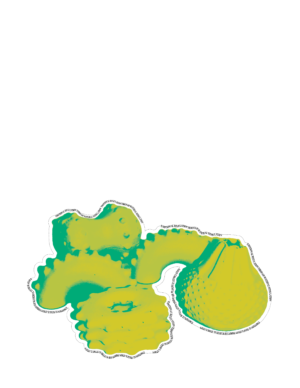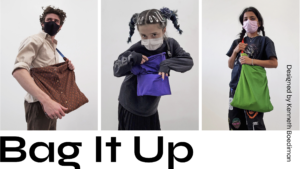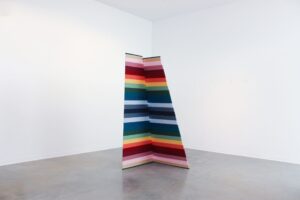Colonial Comfort, 2022
Rae Ashmore
See it On Campus: Level 1
Visitor Info72×36. Felt, Yarn, and a Vintage Label.
Artist Statement:
One of my main goals in my current art practice has been to find ways to decolonize institutionalized spaces. I have been exploring this concept by incorporating techniques learned from my studies into my creative processes. In my art practices, I have been using colonial materials combined with traditional Indigenous art making methods to explore the idea of bridging the gap between institutionalized art and traditional form. My research process generally consists of sourcing information relevant to the concept of each piece and ensuring that I have a deep understanding of my Indigenous culture that I am reconnecting with. I started working in this way in order to explore my own identity and the entanglement of colonization within it. As someone who grew up outside of their Indigenous communities, I strive to learn as much about my culture as possible through whichever ways are available to me.

About the Artwork:

Colonial Comfort is a textile-based piece that explores Canada’s relationship with the Hudson’s Bay Company in the early days of settlement in Canada. The Hudson’s Bay Company had the bulk of the control over most of what is known as Canada today. The arrowheads are a way to represent the traditional ways Indigenous people would have hunted before colonization. Once the Hudson’s Bay Company forced the depletion of animals available with the promise of compensation for the fur that they wanted, hunting became less accessible to Indigenous communities because priority was given to those who were hunting for the Hudson’s Bay Company. Like much of Canadian history, this information is not widely known, and therefore I have tried to communicate this knowledge through this piece. I decided to make a blanket because of the long-standing story that the Hudson’s Bay Company gave Indigenous communities smallpox covered blankets to try and abolish the numbers in these communities so it would be easier to gain control over the land that the communities protected. As blankets are associated with comfort, this piece investigates ideas of how people are just happy to be oblivious to the real happenings and continue on with their lives under a colonial capitalist society. This piece attempts to bring hidden knowledge into the open so that people have a better understanding of Canada’s dark truths. The materials used to make this piece are felt, yarn, and a vintage label






